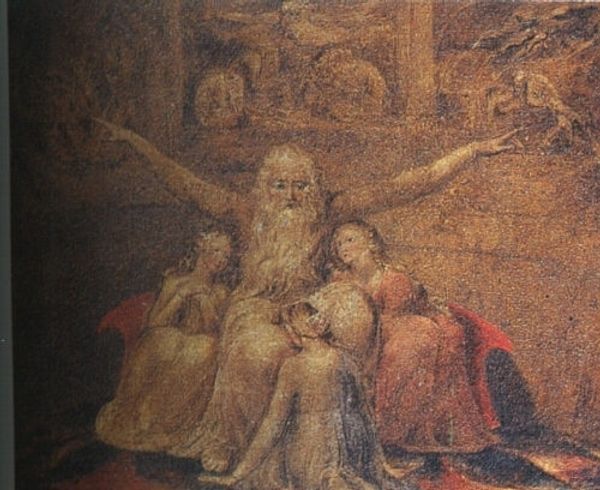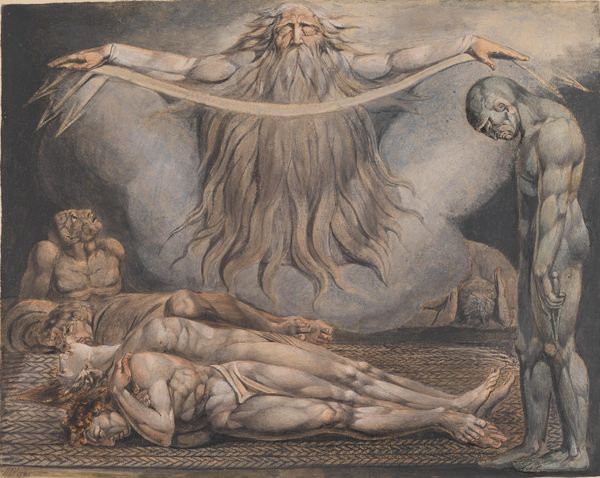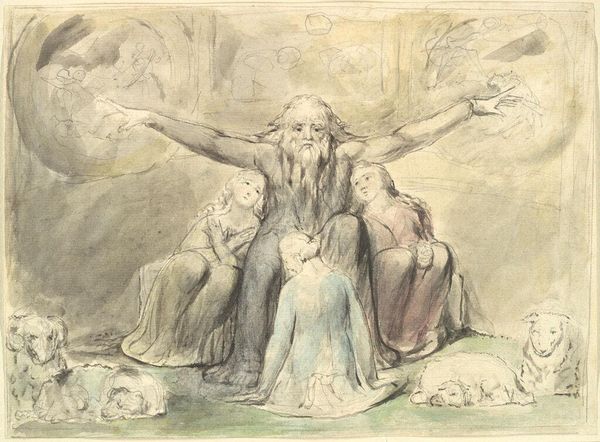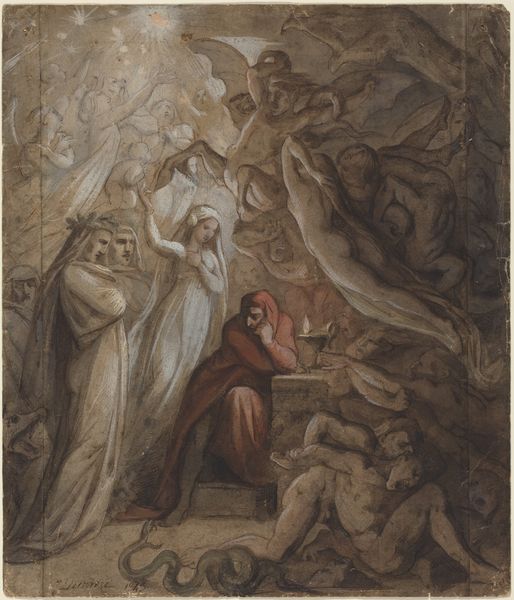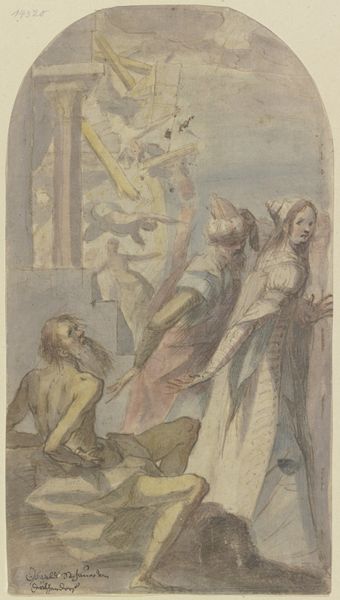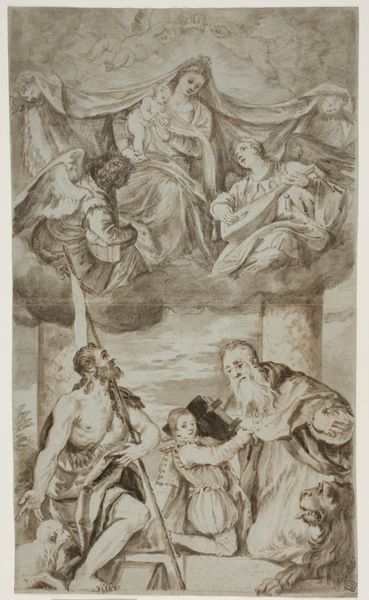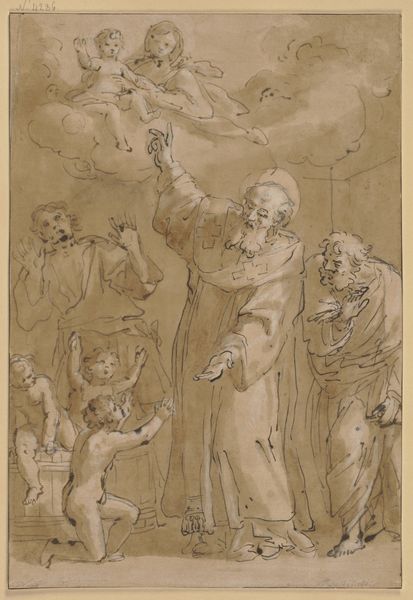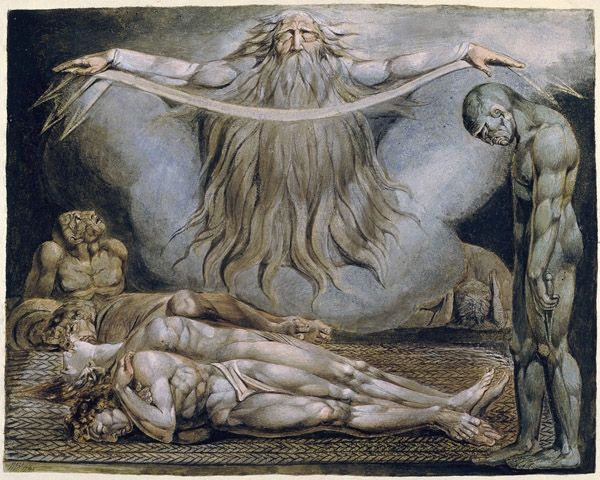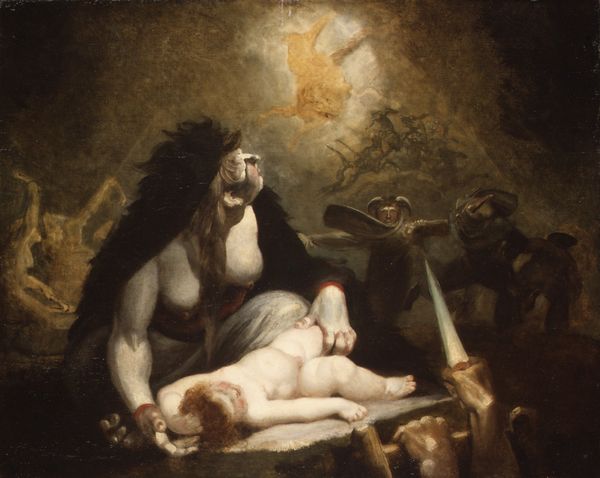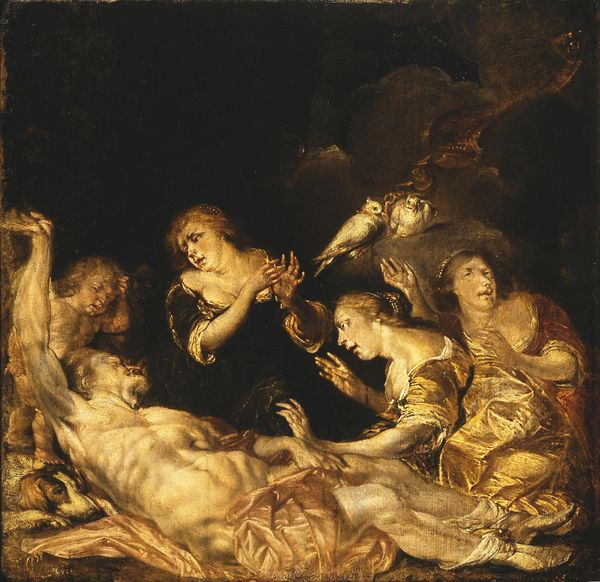
tempera, painting, watercolor
#
portrait
#
tempera
#
painting
#
figuration
#
oil painting
#
watercolor
#
romanticism
#
history-painting
#
charcoal
#
watercolor
Dimensions: overall: 27.3 x 38.4 cm (10 3/4 x 15 1/8 in.) framed: 40.6 x 51.4 cm (16 x 20 1/4 in.)
Copyright: National Gallery of Art: CC0 1.0
What does it mean to fail? How can we measure failure? Today, let's talk about one of the most controversial artists in the history of art... the English poet and painter William Blake (1757-1827). You probably don't consider the famous artist anything close to a failure. Yet during his lifetime, Blake's achievements went almost completely unrecognised. He was often described as insane and foolish, and was a figure of ridicule among some of his contemporaries. He definitely wasn't the type of artist who would be commissioned by royalty or aristocracy! This canvas, ‘Job and His Daughters’, was created by Blake in 1799 or 1800. He used water-based tempera paint before outlining the shapes with pen and ink. It’s one of almost 140 Biblical illustrations created by the artist, all commissioned by his patron Thomas Butts (1757-1845). Unlike the swathes of critics, Thomas Butts appreciated Blake’s radical style. ‘Job and His Daughters’ depicts a central character from the Old Testament. Job was a pious Christian whose faith was tested by God in a number of tragic scenarios. In this painting, Job is represented as an elderly man with a long white beard. He is positioned at the very centre of the canvas, and strikingly gestures with his arms raised diagonally. His fingers are slightly outstretched, as if he is pointing. This directs the viewer’s attention to the details of the background. Three girls, dressed in pale pastel shades, surround Job. The two girls at either side of him both look up towards his face, directing our gaze to his serious expression. Perhaps Job is telling his daughters a story of his hardships? Behind the four figures, Blake has painted three murals which appear to depict scenes of struggle and disaster. This points towards Job’s own terrible experiences. The murals blend in with the background wall due to their muddy colour palettes. William Blake’s innovative approach to art emphasised spirituality and mysticism. He often challenged organised religion (such as the Church of England) and held views that were unconventional for the eighteenth century. His own faith was personal and imaginative, yet led to him being branded peculiar and even heretical. He experienced years of poverty and struggled to sell his work. In the decades following Blake’s death in 1827, the artist’s works were reconsidered. His contribution of new art for a new era began to gain popularity, and he came to be perceived as a neglected genius. It just goes to show that creation and invention are never futile. ️🩹 -
Comments
No comments
Be the first to comment and join the conversation on the ultimate creative platform.
